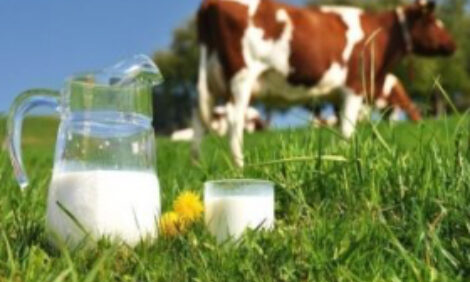



Are Spotless Stalls Really the Goal?
A comfortable stall is a lived in stall, writes John Tyson, Extension engineer, Penn State University.
Looking through dairy magazines at free-stall systems claiming clean stalls, the image is some very clean, almost spotless, stalls, writes Mr Tyson, a dairy systems and design specialist.
When evaluating your cows’ stalls, no manure at the back of the stalls, none tracked into the stalls and clean bedding could mean no cows are using the stalls!
The author of this article noted that while standing in a recently visited barn full of cows, very few were lying down, so he began to look at the cows more closely. While they were not ?lthy, they were not show ring-ready, either.
Many had hygiene scores in the 3 range, and a few swollen hocks could be seen. As he hung out and watched cows for a while, he found that cows seemed to use a lot of time just wandering around the pen.
*
"Rather than just look at how clean the stalls are, watch and evaluate how the cows use the stalls"
They had feed in the bunk and ample water in the waterers, so what were they doing? Well, I guess the answer is nothing! While the idea that cows should be eating, drinking or lying down to make milk is widely accepted, these girls were doing none of these things. Further observations found the cows did use the stalls, but more as a place to stand in and hang out for a while.
Then, after 10 to 15 minutes, they would lie down. When they did lie down, they looked cramped and restless.
When they would rise, they did so by rocking to get up momentum and then very awkwardly would raise their back end and “army crawl’” backward before raising their front. Many of those standing cows were perched, with their front two feet in the stall and rear two feet in the alley.
He goes on to describe that what he was watching was, in fact, a well-groomed, very clean but poorly designed stall. The limited forward-lunge room made rising normally hard for these girls, so, therefore, they didn’t really lie down until they were tired. When they did lie down, the brisket locator (board) was holding them too far back or they were on top of it, causing them to be restless.
The neck rail position was causing them to perch in the stalls and requiring them to crawl out from under it before completely rising.
So, if a stall is well-used, it has to be well-designed and, therefore, should looked “lived in.’” The stalls should have enough lunge room for animals to rise normally, the brisket locator should allow the cow to lie completely on the stall bed, and the neck rail should allow the animal to be completely in the stall before she lies down.
A few manure piles at the rear of the stalls doesn’t necessarily mean a poorly managed stall, but rather a well-used stall, which is a good thing. Rather than just look at how clean the stalls are, watch and evaluate how the cows use the stalls. In the end, a clean, well-used stall is the real goal.
February 2014


